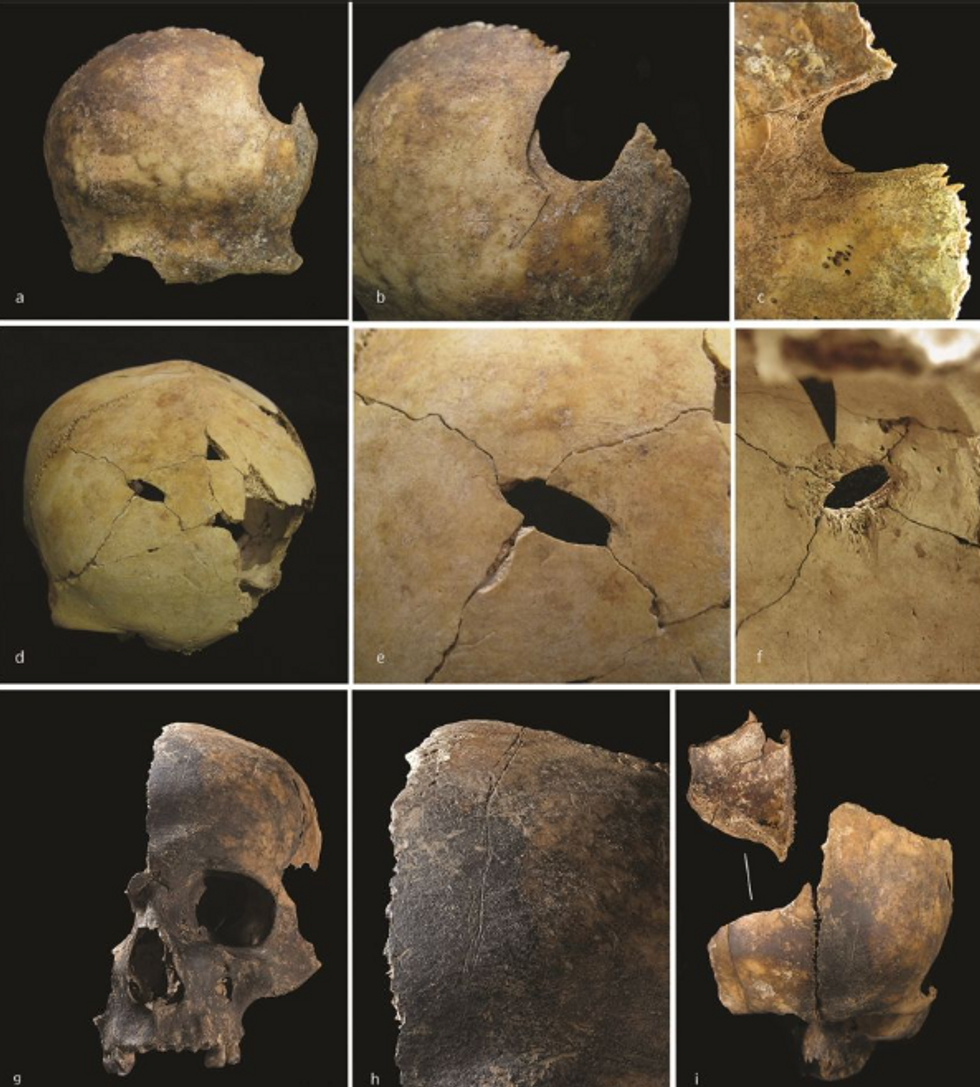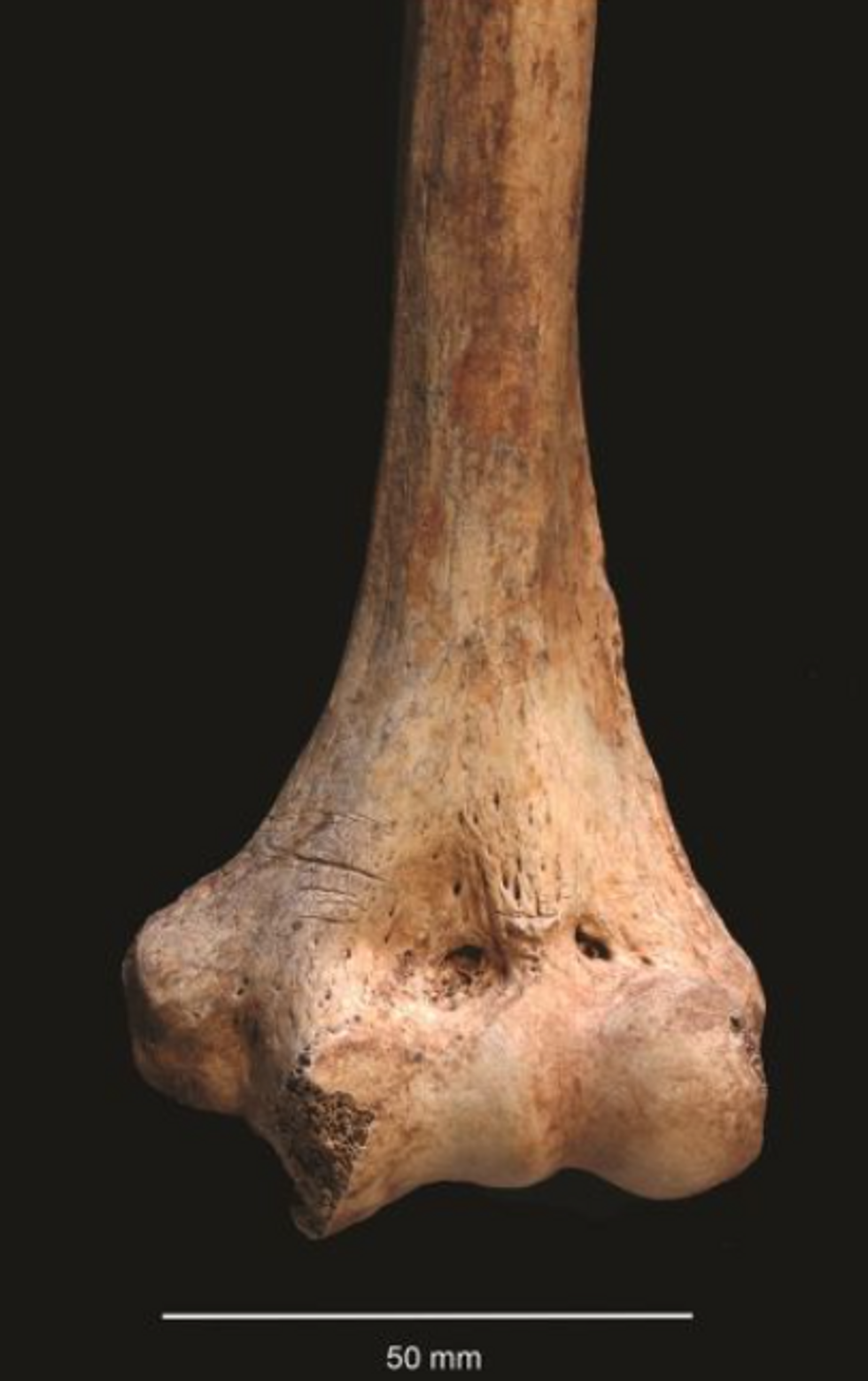Archaeologists have uncovered evidence of cannibalism and mass murder in Bronze Age Britain, challenging long-held beliefs about this being a peaceful period in prehistory.
The grim discovery, based on analysis of 4,500-year-old human remains found in Somerset, reveals that dozens of people were killed, butchered and consumed around 2500 BC.
The findings, led by researchers from the University of Oxford, paint what experts describe as a “considerably darker picture” of Britain’s Early Bronze Age than previously thought.
The evidence comes from more than 3,000 human bones and bone fragments, representing at least 37 victims of what appears to be a prehistoric massacre.

The evidence comes from more than 3,000 human bones and bone fragments
Schulting et al. Antiquity, 2024
The remains were discovered in a 15-metre-deep shaft in Charterhouse Warren, a hamlet in Somerset, during the 1970s.
The victims included men, women and children, suggesting an indiscriminate attack on an entire community.
Unlike typical contemporary burials, these remains showed clear signs of violence and deliberate dismemberment.
The Oxford University team’s analysis revealed that the bones had been mixed with cattle remains at the site.
This extensive collection of human remains stands out as particularly unusual, as direct evidence of violent conflict from this period is rare in Britain.
The skulls displayed evidence of violent deaths, with clear signs of blunt force trauma – likely from being struck with hard objects.
Further examination revealed numerous cut marks on the bones, made around the time of death.
These marks strongly suggest the victims were intentionally butchered after being killed.
The analysis indicates that parts of the bodies may have been consumed by their attackers.
The pattern of injuries, combined with no evidence of defensive wounds, suggests the victims were taken completely by surprise during the attack.
The methodical nature of the cut marks points to deliberate butchery rather than random violence.
Professor Rick Schulting, who led the research, emphasised how unusual these findings are for the Early Bronze Age.

The pattern of injuries suggests the victims were taken completely by surprise during the attack
Schulting et al. Antiquity, 2024
“We actually find more evidence for injuries to skeletons dating to the Neolithic period in Britain than the Early Bronze Age, so Charterhouse Warren stands out as something very unusual,” he said.
The discovery has forced experts to reconsider their understanding of the period.”
It paints a considerably darker picture of the period than many would have expected,” Professor Schulting added.
The findings, published in the journal Antiquity, represent one of the clearest examples of prehistoric violence in Britain.
.
The researchers suggest the cannibalism was not driven by hunger, as cattle bones found at the site indicate the community had sufficient food resources.
Instead, the mixing of human and animal remains may have been a deliberate act to dehumanise the victims.
The attackers likely consumed their victims’ flesh and mixed their bones with cattle remains as a way of equating their enemies with animals.
While the exact motivation for the massacre remains unknown, researchers suggest it could have stemmed from social tensions.
These tensions, possibly arising from theft or insults, may have escalated dramatically into mass violence.
Professor Schulting emphasised the broader significance of the discovery for understanding prehistoric Britain.
“Charterhouse Warren is one of those rare archaeological sites that challenges the way we think about the past,” he said.
The findings serve as a stark reminder of humanity’s capacity for violence, even in prehistoric times.”
It is a stark reminder that people in prehistory could match more recent atrocities and shines a light on a dark side of human behaviour,” Professor Schulting noted.
He added: “That it is unlikely to have been a one-off event makes it even more important that its story is told.”